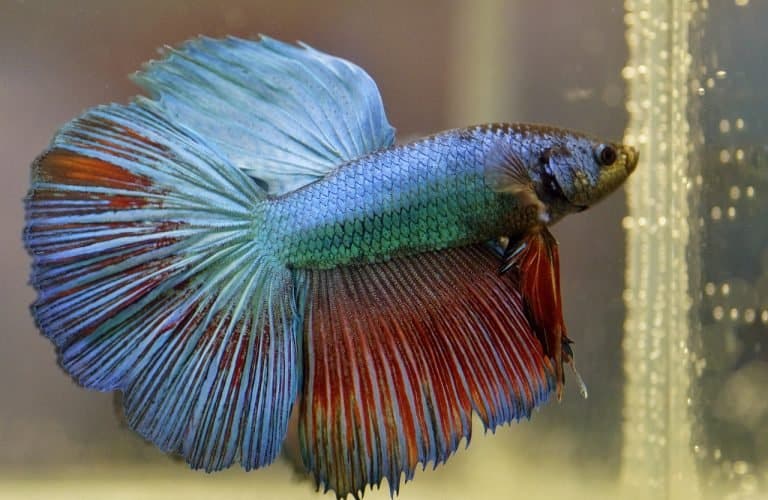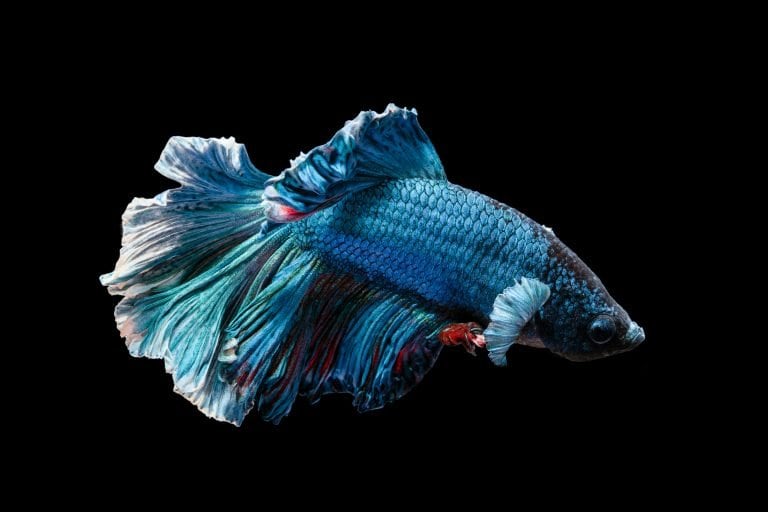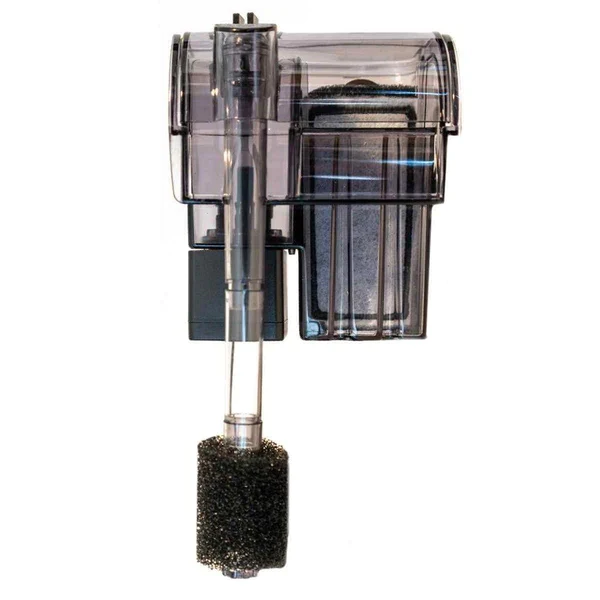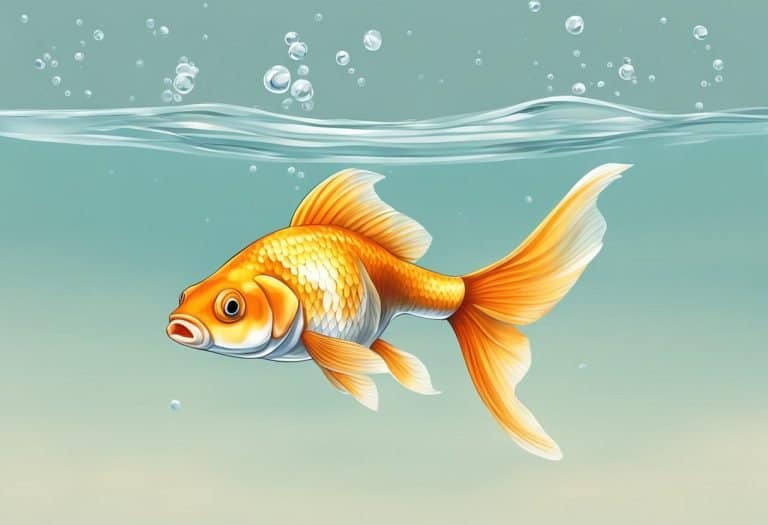If you’ve noticed your goldfish swimming upside down, it can be a cause for concern. While it’s not necessarily a sign of immediate danger, it could indicate an underlying health issue that needs attention. Understanding the causes and symptoms of upside-down swimming in goldfish can help you take the necessary steps to keep your pet healthy.

One of the most common causes of upside-down swimming in goldfish is swim bladder disease. This condition affects the swim bladder, which is an organ that helps the fish maintain buoyancy in the water. When the swim bladder is not functioning properly, the fish may have difficulty swimming and may float to the top or bottom of the tank. Other factors that can contribute to swim bladder disease include constipation, infection, and enlarged organs.
If you suspect that your goldfish is experiencing swim bladder disease or another health issue, it’s important to take action quickly. In some cases, dietary changes or treatment with antibiotics or other medications may be necessary to help your fish recover. Consulting with a veterinarian who specializes in fish health can also be helpful in diagnosing and treating health issues in goldfish.
Key Takeaways
- Upside-down swimming in goldfish can be a sign of swim bladder disease or other health issues.
- Factors that can contribute to swim bladder disease include constipation, infection, and enlarged organs.
- Taking quick action and consulting with a veterinarian can help prevent serious health issues in goldfish.
Understanding Goldfish Swim Bladder Disease

As aquatic animals, goldfish rely on their swim bladder to regulate the air going in and out of it, which helps them to control their buoyancy and maintain balance in the water. Swim bladder disease is a common condition that affects goldfish, causing them to lose their ability to regulate the air in the swim bladder. This can lead to a range of symptoms, including swimming upside down, on their side, or even sinking to the bottom of the tank.
Swim bladder disease can be caused by a variety of factors, including overfeeding, constipation, bacterial infections, and genetic predisposition. When the swim bladder is damaged or inflamed, it can become rigid and unable to regulate air properly, leading to buoyancy issues.
Goldfish with swim bladder disorder may have difficulty swimming and maintaining their balance in the water. They may float upside down, sink to the bottom of the tank, or remain afloat on the water’s surface. This can be distressing for the fish and can also make it difficult for them to feed and interact with other fish in the tank.
Fortunately, there are several swim bladder treatments available to help manage the condition. These include adjusting the fish’s diet, reducing feeding frequency, adding aquarium salt to the tank, and providing a stress-free environment. In severe cases, veterinary treatment may be necessary, including the use of antibiotics or surgery to correct the swim bladder.
It is important to note that swim bladder issues can also be a symptom of other underlying health conditions, such as bacterial infections or parasites. Therefore, it is important to monitor your goldfish’s behavior and seek veterinary advice if you notice any changes in their swimming patterns or overall health.
In summary, swim bladder disease is a common condition that affects goldfish, causing them to lose their ability to regulate the air in the swim bladder. This can lead to a range of symptoms, including swimming upside down, on their side, or sinking to the bottom of the tank. However, with proper care and treatment, most goldfish can recover from swim bladder issues and return to their normal, healthy state.
Causes of Upside Down Swimming

When a goldfish is swimming upside down, it is a sign of a problem with its swim bladder. The swim bladder is an internal organ that helps the fish regulate its buoyancy and orientation in the water. Here are some of the most common causes of swim bladder issues in goldfish:
- Constipation: Goldfish are prone to constipation, which can put pressure on their swim bladder and cause it to malfunction. This is often caused by overfeeding or feeding the wrong types of food.
- Digestion: Poor digestion can also lead to swim bladder problems. Goldfish need a balanced diet that includes both protein and fiber to keep their digestive system functioning properly.
- Gulping Air: Goldfish that gulp air at the surface of the water can also experience swim bladder issues. This can happen when the water is low in oxygen or when the fish is stressed.
- Fatty Deposits: Goldfish that are overweight or have a high-fat diet can develop fatty deposits around their swim bladder, which can interfere with its function.
- Cysts: Cysts or tumors can also affect the swim bladder and cause the fish to swim upside down.
If you notice your goldfish swimming upside down, it is important to identify the underlying cause and address it promptly. A healthy diet, regular water changes, and proper feeding practices can help prevent swim bladder issues in goldfish. If the problem persists, consult a veterinarian or aquatic specialist for further advice.
Identifying Symptoms
When it comes to identifying whether your goldfish is upside down, there are a few symptoms you should be aware of. These symptoms can help you determine whether your goldfish is suffering from swim bladder disease or some other health issue.
One of the most obvious symptoms is swimming upside down. If your goldfish is floating on its back, it is likely suffering from swim bladder disease. However, if your goldfish is swimming upside down but not floating, it could be a sign of other health issues.
Another symptom to look out for is floating. If your goldfish is floating at the top of the tank and having trouble swimming down, it could be a sign of swim bladder disease. However, if your goldfish is floating but still able to swim down, it could be a sign of other health issues.
Sinking is another symptom to be aware of. If your goldfish is sinking to the bottom of the tank and having trouble swimming up, it could be a sign of swim bladder disease. However, if your goldfish is sinking but still able to swim up, it could be a sign of other health issues.
Swimming sideways is also a symptom to watch out for. If your goldfish is swimming sideways and having trouble swimming straight, it could be a sign of swim bladder disease. However, if your goldfish is swimming sideways but still able to swim straight, it could be a sign of other health issues.
A distended stomach is another symptom to look out for. If your goldfish’s stomach is swollen and bloated, it could be a sign of swim bladder disease or other health issues.
A curved back is also a symptom to be aware of. If your goldfish’s back is curved, it could be a sign of swim bladder disease or other health issues.
A swollen belly is another symptom to watch out for. If your goldfish’s belly is swollen and bloated, it could be a sign of swim bladder disease or other health issues.
Lethargy is also a symptom to be aware of. If your goldfish is not as active as usual and seems to be lethargic, it could be a sign of swim bladder disease or other health issues.
In summary, swimming upside down, floating, sinking, swimming sideways, a distended stomach, a curved back, a swollen belly, and lethargy are all symptoms to watch out for when trying to determine whether your goldfish is suffering from swim bladder disease or some other health issue.
Role of Water Parameters
Maintaining proper water parameters is crucial for the health and well-being of your goldfish. Poor water quality can lead to a variety of health problems, including swim bladder disorder which can cause your goldfish to float upside down.
One important water parameter to monitor is the pH level. Goldfish prefer a pH range of 7.0 to 7.8. A pH level that is too high or too low can cause stress to your goldfish and weaken their immune system, making them more susceptible to diseases.
Another important water parameter is the nitrate level. Nitrate is a byproduct of the nitrogen cycle, which occurs naturally in your aquarium. High nitrate levels can cause poor water quality and stress to your goldfish. Regular water changes can help keep nitrate levels in check.
In addition to regular water changes, it is important to monitor the water temperature. Goldfish prefer cooler water temperatures between 65°F to 75°F. Fluctuations in temperature can cause stress to your goldfish and weaken their immune system.
To ensure proper water quality, it is recommended to use a water testing kit to monitor nitrite and nitrate levels. A water testing kit can also help you determine when it is time for a water change.
In conclusion, maintaining proper water parameters is crucial for the health and well-being of your goldfish. Regular water changes, monitoring pH and nitrate levels, and maintaining a consistent water temperature can help prevent swim bladder disorder and other health problems caused by poor water quality.
Infection as a Contributing Factor
Infections can also contribute to a goldfish swimming upside down. Bacterial infections, parasitic infections, and disease-causing parasites can all affect a goldfish’s swim bladder, causing it to swim upside down.
One common cause of bacterial infection in goldfish is poor water quality. High levels of ammonia in the water can damage a goldfish’s gills and make it more susceptible to bacterial infections. It is important to regularly test the water quality and change the water as needed to maintain a healthy environment for your goldfish.
Parasitic infections can also affect a goldfish’s swim bladder. For example, flukes are a type of parasite that can attach themselves to a goldfish’s swim bladder and cause it to malfunction. If you suspect that your goldfish has a parasitic infection, consult with a veterinarian who specializes in fish care.
In addition to bacterial and parasitic infections, other diseases can also affect a goldfish’s swim bladder and cause it to swim upside down. For example, dropsy is a condition that can cause fluid to build up inside a goldfish’s body, leading to swim bladder problems. If you notice that your goldfish is swimming upside down and also appears bloated or swollen, it may be suffering from dropsy.
Overall, infections can be a contributing factor to a goldfish swimming upside down. Maintaining good water quality and seeking veterinary care when necessary can help prevent and treat infections that may affect your goldfish’s swim bladder.
Dietary Considerations and Treatment
When it comes to treating a goldfish that is floating upside down, dietary considerations are crucial. Swim bladder disorder can be caused by a variety of factors, but a poor diet is one of the most common culprits. Feeding your goldfish sinking foods that contain fiber, such as peas, can help alleviate the symptoms of swim bladder disorder.
One of the easiest ways to help a goldfish with swim bladder disorder is to stop feeding it for a few days. This gives the fish’s digestive system a chance to reset and can help reduce the pressure on the swim bladder. After the fast, try feeding your goldfish small portions of sinking pellets or frozen foods that are high in fiber, such as bloodworms or brine shrimp.
Green peas are also an excellent dietary option for goldfish with swim bladder disorder. Simply boil a few peas until they are soft, remove the outer skin, and feed them to your fish. The high fiber content of the peas can help regulate the fish’s digestive system and reduce the pressure on the swim bladder.
It’s important to note that not all sinking foods are created equal. Some sinking pellets can actually exacerbate swim bladder disorder by causing constipation or bloating. Look for sinking foods that are specifically designed for goldfish and contain high levels of fiber.
In addition to dietary changes, there are a few other treatment options that can help alleviate the symptoms of swim bladder disorder. Adding aquarium salt to the water can help reduce inflammation and improve the fish’s overall health. You can also try gently massaging the fish’s belly to help release any trapped air in the swim bladder.
Overall, treating a goldfish with swim bladder disorder requires a combination of dietary changes and other treatments. By feeding your fish a healthy diet that includes sinking foods and green peas, you can help regulate its digestive system and reduce the pressure on the swim bladder.
Role of a Veterinarian
As veterinarians, we play a crucial role in diagnosing and treating goldfish that are swimming upside down. When a goldfish owner notices their fish is swimming upside down, it is important to bring the fish to a veterinarian as soon as possible.
Upon examination, we will diagnose the cause of the goldfish’s buoyancy issues. In some cases, the cause may be minor and easily treatable. However, in severe cases, euthanasia may be the most humane option for the fish.
It is important to note that not all veterinarians are trained in fish medicine, so it is important to find a veterinarian with experience in treating fish. A veterinarian with experience in fish medicine will have the knowledge and tools necessary to diagnose and treat the goldfish’s condition.
In addition to diagnosing and treating the goldfish, we can also provide guidance on how to prevent future buoyancy issues. This may include recommendations on diet, water quality, and tank size. By working with a veterinarian, goldfish owners can ensure their fish live a healthy and happy life.
Preventive Measures
As with most health issues, prevention is key when it comes to avoiding upside down swimming in goldfish. Here are some preventive measures that we can take to ensure the health of our goldfish:
Monitor and maintain water quality parameters
Regularly monitoring and maintaining water quality parameters within the appropriate range is essential for preventing swim bladder disease and other health issues in goldfish. This includes keeping the water clean and well-oxygenated, maintaining appropriate pH levels, and ensuring proper filtration.
Avoid overcrowding the tank
Overcrowding the tank can cause stress and lead to a weakened immune system in goldfish. This can make them more susceptible to swim bladder disease and other health issues. We should aim to provide ample swimming space for our goldfish, with at least 20 gallons of water per fish.
Provide a balanced diet
Feeding habits can also play a role in preventing swim bladder disease in goldfish. We should provide a balanced diet that includes both dry and live food, and avoid overfeeding. Overfeeding can cause constipation, which can lead to swim bladder issues.
Use aquarium salt
Adding aquarium salt to the tank can help prevent swim bladder disease in goldfish. Aquarium salt can help improve the fish’s immune system and reduce stress levels. We should add aquarium salt at a rate of 1 tablespoon per 5 gallons of water.
Quarantine new fish
When introducing new fish to the tank, we should quarantine them in a separate tank for at least two weeks. This can help prevent the spread of disease to our existing fish and give us time to observe the new fish for any signs of illness.
By following these preventive measures, we can help ensure the health and well-being of our goldfish and prevent swim bladder disease and other health issues.
Understanding Other Health Issues
While swim bladder disease is the most common reason for goldfish to swim upside down, there are other health issues that can cause this behavior. It is important to understand these issues to ensure the health and well-being of your pet.
Intestinal Parasites
Intestinal parasites can cause a range of health issues in goldfish, including swim bladder problems. These parasites can affect the digestive system and cause inflammation, leading to swim bladder issues and other health problems. If you suspect that your goldfish may have intestinal parasites, it is important to seek veterinary care to diagnose and treat the issue.
Other Health Issues
There are several other health issues that can cause goldfish to swim upside down, including bacterial infections, viral infections, and fungal infections. These issues can cause a range of symptoms, including swim bladder problems, and can be serious if left untreated. If you notice any unusual behavior or symptoms in your goldfish, it is important to seek veterinary care to determine the root cause and provide appropriate treatment.
Quality of Life
Swim bladder disease and other health issues can significantly impact the quality of life of your goldfish. These issues can cause discomfort, pain, and difficulty swimming, which can lead to stress and a decreased quality of life. It is important to monitor your goldfish for any signs of health issues and seek veterinary care if necessary to ensure that your pet is healthy and happy.
Death
In severe cases, swim bladder disease and other health issues can lead to death. It is important to be aware of the signs and symptoms of these issues and seek veterinary care as soon as possible to prevent serious complications and ensure the health and well-being of your pet.
Overall, it is important to understand the various health issues that can cause goldfish to swim upside down and take steps to prevent and treat these issues. By monitoring your pet for signs of health issues and seeking veterinary care when necessary, you can help ensure that your goldfish lives a healthy and happy life.




